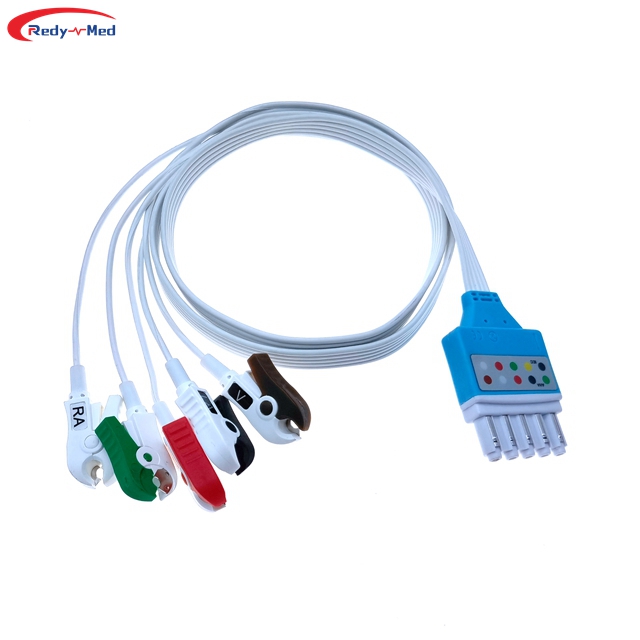
Are ECG cables reusable?
2024-03-21 00:04:28
The Reusability of ECG Cables: An In-depth Analysis

Electrocardiogram (ECG) cables are integral components of the ECG machine that play a crucial role in monitoring the electrical activity of the heart. In this article, we delve into the question of whether ECG cables are reusable or not, exploring the various factors that determine their reusability and the potential implications it carries.
1. Understanding ECG Cables
ECG cables are specifically designed to connect the patient's body to the ECG machine, facilitating the transmission of electrical signals from the body to the monitor. These cables consist of multiple lead wires and connectors, often wrapped in a protective sleeve, to ensure accurate signal transmission and patient safety.
2. Factors Influencing Reusability
Several factors determine the reusability of ECG cables:
i) Sterilization: ECG cables can be reusable if they are properly sterilized after each use. Sterilization methods such as autoclaving or using chemical disinfectants can effectively eliminate any potential contaminants.
ii) Wear and Tear: Continuous usage can lead to wear and tear of the cables, compromising their functionality. Regular inspections and maintenance are crucial to ensure ECG cables remain in a reusable condition.
iii) Connector Compatibility: The connectors on ECG cables need to be compatible with various ECG machines in order to be reused. However, with advancements in technology, some connectors may become outdated, limiting the reusability of cables.
3. Reusable vs Disposable ECG Cables
While reusable ECG cables provide cost-effectiveness and reduce waste, disposable cables offer convenience and eliminate the risks associated with ineffective sterilization. The choice between reusable and disposable cables depends on the specific healthcare setting and infection control policies.
4. Proper Care and Maintenance
To enhance the reusability of ECG cables, proper care and maintenance are essential:
i) Cleaning: ECG cables must be properly cleaned after each use to remove any residues or contaminants. Using appropriate cleaning agents and disinfectants ensures patient safety.
ii) Storage: ECG cables should be stored in a clean and dry environment, away from any potential damage or exposure to moisture. Proper coiling and securing prevent entanglement and cable deterioration.
5. Environmental Considerations
The environmental impact of ECG cables should not be overlooked. Reusability of cables contributes to reducing electronic waste, minimizing the carbon footprint of healthcare facilities and promoting sustainability.
Conclusion
ECG cables can be reusable or disposable, depending on various factors such as sterilization, wear and tear, and connector compatibility. While the reusability of ECG cables offers cost-effectiveness, proper maintenance and adherence to infection control protocols are essential. Ultimately, the choice between reusable and disposable cables depends on the specific healthcare settings and environmental considerations.
Get the latest price? We'll respond as soon as possible(within 12 hours)




